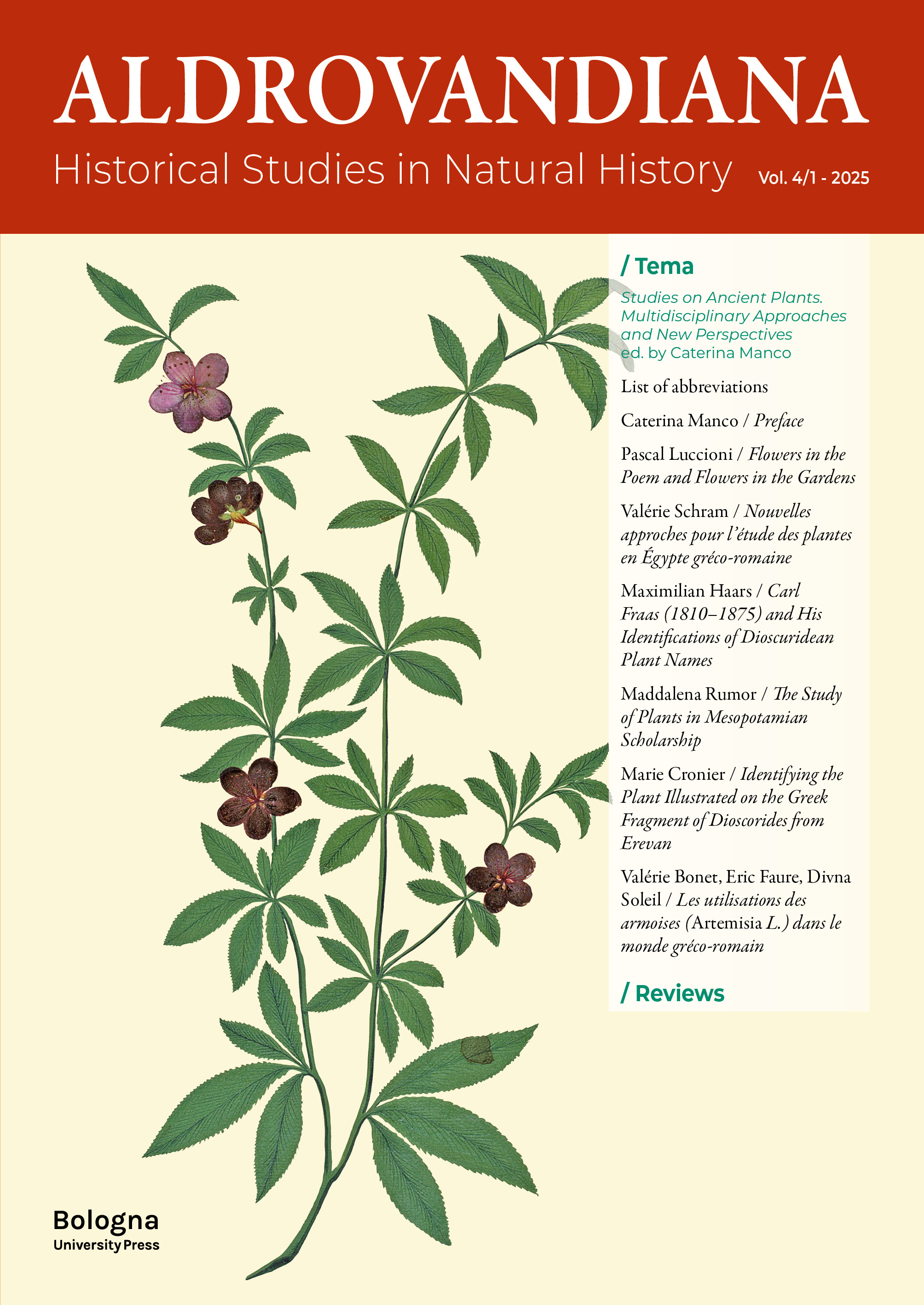Les utilisations des armoises (Artemisia L.) dans le monde gréco-romain à la lumière des connaissances chimico-médicales actuelles

Published 2025-07-17
Keywords
- Artemisia L.; Artemis; Ancient and current phytotherapy; Secondary metabolites; Gynecology; Malaria
How to Cite
Copyright (c) 2025 Valérie Bonet, Eric Faure, Divna Soleil

This work is licensed under a Creative Commons Attribution 4.0 International License.
Abstract
Medicinal plants used in Antiquity constitute a privileged field for multidisciplinary and interdisciplinary studies. The genus Artemisia L. is a striking example. Highly valued in Antiquity, mugworts are today the focus of numerous investigations, particularly in the treatment of gynecological disorders and malaria. By herbalizing in Greek and Latin medical texts, we can highlight the fact that current pharmacological research helps to shed light on the uses of mugworts in ancient texts. Several of their vernacular names, dating back to Greco-Roman Antiquity, as well as their current generic epithet, derive from Artemis, the virgin goddess who protected women. It is, therefore, unsurprising that they have had gynecological applications in phytotherapy for over two millen- nia. As far as a correspondence is possible between ancient references and modern botanical classification, the plants most used in the Greco-Roman medical world often correspond to species of the genus Artemisia, from which active principles with proven therapeutic efficacy have been discovered.